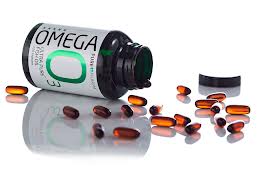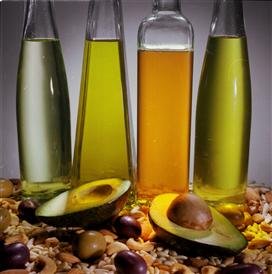 Whole-body protein turnover is the continuous process within the human body by which protein is created (anabolism) and broken down (catabolism), it is believed to occur at a rate of 300 g/day in an average 70 kg man. Whole-body protein turnover is largely regulated by feeding, a number of specific nutritional factors, along with fasting, hormonal factors and certain disease states. Gains in skeletal muscle occur following prolonged periods of net protein deposition; where muscle protein synthesis exceeds net muscle protein breakdown, thus resulting in a net gain in muscle protein (Wagenmakers, 1999).
Whole-body protein turnover is the continuous process within the human body by which protein is created (anabolism) and broken down (catabolism), it is believed to occur at a rate of 300 g/day in an average 70 kg man. Whole-body protein turnover is largely regulated by feeding, a number of specific nutritional factors, along with fasting, hormonal factors and certain disease states. Gains in skeletal muscle occur following prolonged periods of net protein deposition; where muscle protein synthesis exceeds net muscle protein breakdown, thus resulting in a net gain in muscle protein (Wagenmakers, 1999).
Humans, especially athletes often seek net gains in muscle protein; such gains enable increased muscle mass and enhance muscle recovery. As mentioned, a number of nutritional and hormonal factors regulate protein synthesis and thus have a significant impact on body composition; the way you look.
Protein intake is known to have a significant effect on whole-body protein turnover, but what effect does fish oil have, if any?
Recent studies have suggested long-chain omega-3 fatty acids enhance the efficiency and effectiveness of insulin pathway signalling, therefore generating mTOR activity. The mammalian target of rapamycin (mTOR) regulates a number of physiological components, including; interestingly protein synthesis. Signalling through the mTOR is activated by amino acids, insulin, and growth factors, but impaired by nutrient or overall energy deficiency.
So mTOR regulates muscle protein synthesis; and mTOR signalling is activated by insulin, the efficiency of which is enhanced by omega-3 fatty acids.
In a study of fish oil supplementation (4 g/day) providing 1.86 and 1.50 g/day EPA and DHA for 8-weeks in nine healthy middle aged subjects, Smith et al (2011a) revealed the anabolic response to insulin and amino acid infusion was greater in those subjects supplemented fish oils. In addition, muscle protein concentration and muscle cell size were both greater after fish oil supplementation; clearly demonstrating fish oil aids the activation of mTOR. This has previously been demonstrated in older adults (Smith et al. 2011b), and Gingras et al (2007) also demonstrated a positive effect of fish oil supplementation on mTOR activation and subsequent muscle protein synthesis through enhanced insulin signalling.
This apparent activation of the insulin signalling pathway is thought to derive from the anti-inflammatory effects of long-chain omega-3 fatty acids. Insulin resistance is associated with chronic inflammation; both EPA and DHA exert significant anti-inflammatory effects, and actively reduce inflammatory signalling molecule production. In an intricate study on mice, Young Oh et al. (2010) reported omega-3 fatty acid supplementation inhibited inflammation and enhanced insulin sensitivity. A similar mechanism has also been demonstrated in humans, Tsitouras et al. (2008) revealed adults fed a high omega-3 fatty acid diet for 8-weeks increased insulin sensitivity through improved inflammatory status.
So how is that of benefit?
Well supplementation of omega-3 fatty acids increase insulin sensitivity which allows for more effective activation of the insulin signalling pathway ultimately leading to mTOR stimulation and muscle protein synthesis. Increasing insulin sensitivity also has a significant effect on a number of other physiological functions including an increase in glucose and fatty acid uptake by muscle cells (Goodpaster et al. 2003); directing nutrients to muscle cells for oxidation (energy production) rather than fat storage, improving overall body composition and providing more fuel for muscle during exercise.
So omega-3 supplementation can activate the body’s muscle making systems and improve body composition?
Well, yes. A randomized double-blind study on 44 middle aged men and women supplemented either 4 g/day omega-3 fatty acids providing 1,600 mg/day EPA and 800 mg/day DHA, or 4 g/day safflower oil for 6-weeks revealed omega-3 fatty acid supplementation significantly increased fat free mass (body mass minus fat mass), significantly reduced fat mass, and had a tendency to reduce body fat percentage (Noreen et al. 2010).
These studies highlight a mechanism that eludes omega-3 fatty acid supplementation can significantly improve body composition. Stemming from the anti-inflammatory capacity of both EPA and DHA, omega-3 fatty acids can increase insulin sensitivity which has a knock on effect on muscle anabolism in the presence of dietary carbohydrate and protein (typical of a post-workout meal/supplement) and repartitioning of energy to muscle instead of fat which ultimately results in fat loss. These initial findings require further exploration in more rigorous studies with more participants and in a more controlled setting; although the science is clearly there to be disproved.
.
References
Gingras, A., White, P., Chouinard, P., Julien, P., Davis, T., Dombrowski, L.,... & Thivierge, M. (2007). Long-chain omega-3 fatty acids regulate bovine whole-body protein metabolism by promoting muscle insulin signalling to the Akt-mTOR-S6K1 pathway and insulin sensitivity. Journal of Physiology, 579, 269.
Goodpaster, B., Katsiaras, A., & Kelley, D. (2003). Enhanced fat oxidation through physical activity is associated with improvements in insulin sensitivity in obesity. Diabetes, 52, 2191 – 2197.
Noreen, E., Sass, M., Crowe, M., Pabon, V., Brandauer, J., & Averill, L. (2010). Effects of supplemental fish oil on resting metabolic rate, body composition, and salivary cortisol in healthy adults. Journal of the International Society of Sports Nutrition, 7, 31.
Smith, G., Atherton, P., Reeds, D., Mohammed, B., Rankin, D., Rennie, M., & Mittendorfer, B. (2011b). Dietary omega-3 fatty acid supplementation increases the rate of muscle protein synthesis on older adults: a randomized controlled trial. American Journal of Clinical Nutrition, 93, 402.
Smith, G., Atherton, P., Reeds, D., Mohammed, B., Rankin, D., Rennie, M., & Mittendorfer, B. (2011a). Omega-3 polyunsaturated fatty acids augment the muscle protein anabolic response to hyperaminoacidemiahyperinsulinemia in health young and middle aged men and women. Clinical Science (London), 121, 267.
Tsitouras, P., Gucciardo, F., Salbe, A., Heward, C., & Harman, S. (2008). High omega-3 fat intakes improves insulin sensitivity and reduces CRP and IL6, but does not affect other endocrine axes in healthy older adults. Hormonal Metabolism Research, 40, 199.
Wagenmakers, A. (1999). Tracers to investigate protein and amino acid metabolism in human subjects. The Proceedings of the Nutrition Society, 58, 987.
Young Oh, D., Talukdar, S., Bae, E., Imamura, T., Morinaga, H., Fan, W., Olefsky, J. (2010). GPR120 is an omega-3 fatty acid receptor mediating potent anti-inflammatory and insulin sensitizing effects. Cell, 142, 687.
.
 Bio: Matt holds a BSc (Honours) degree in Sport & Exercise Science, an MSc in Nutrition Science. Through his own Performance Nutrition business, Nutrition Condition, he delivers frequent Health & Wellbeing Workshops to corporate and personal clients advising on how best to develop a sound, scientifically structured nutrition programme free from fads and marketing bias. Nutrition Condition also delivers Performance Nutrition services to professional athletes.
Bio: Matt holds a BSc (Honours) degree in Sport & Exercise Science, an MSc in Nutrition Science. Through his own Performance Nutrition business, Nutrition Condition, he delivers frequent Health & Wellbeing Workshops to corporate and personal clients advising on how best to develop a sound, scientifically structured nutrition programme free from fads and marketing bias. Nutrition Condition also delivers Performance Nutrition services to professional athletes.
Matt can be contacted on matt@nutritioncondition.com or at www.nutritioncondition.co.uk
For regular updates follow Matt on Twitter @mattNCUK.
.






